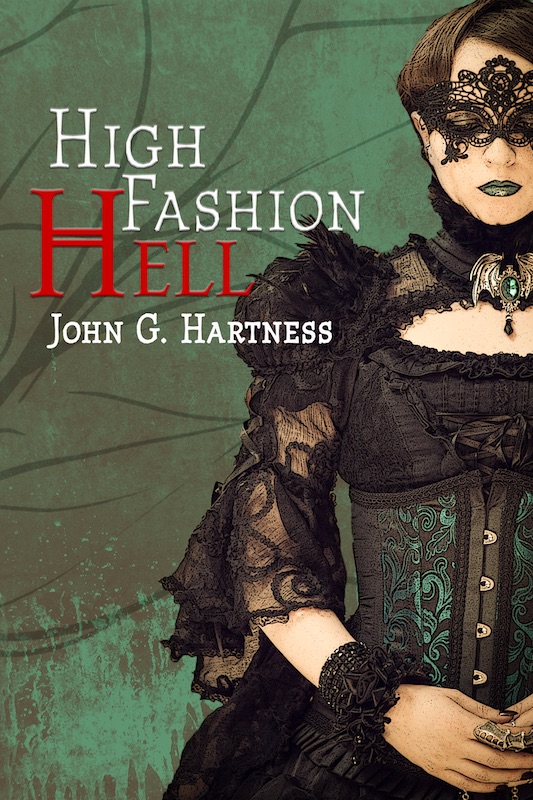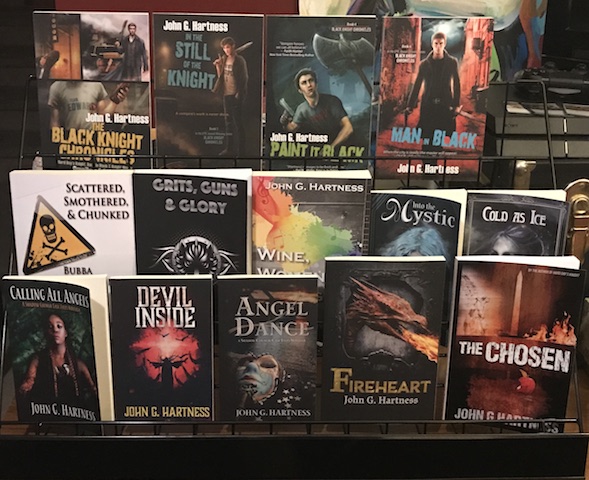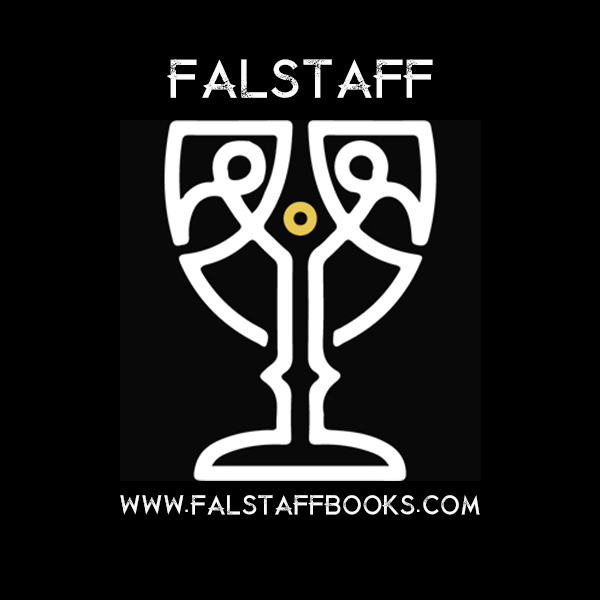by john | Feb 24, 2015 | Evolution of Evil, Writing
It seems fitting that this story is our launch day Evolution of Evil, because it’s one of my very favorite stories in the book, by one of my favorite writers and people, Edmund Schubert. Edmund certainly could have called me up and said “I want to be in the anthology,” and with his talent and publishing credits my answer would have been “Hell Yeah!” But he didn’t. He submitted through slush, following all the submission guidelines, with a professional cover letter, just like he expects folks to do to IGMS. I appreciated that professionalism, then I read the story and was blown away. Now we get the story behind the story, which is always the best.
I’ve long avoided writing about anything within a thousand miles of the zombie genre because I felt like there wasn’t anything new to say on the subject. I’ve run into a few great stories, a slew of bad ones, and enough competent ones to feel like what ought to be said on the subject already has been said. I’ve immensely enjoyed the best of them (the original Night of the Living Dead was brilliant, Carry Ryan has done exceptional work in both novels and short stories, and I’ve devoured (pardon the pun) The Walking Dead, both the TV show and the graphic novels). But a lot of writers are beating what’s starting to feel like a dead horse, and even if that horse comes back to life and starts eating people… well, okay, I think I would actually consider reading a story about that, but you really do to have to go that far out there to hold my attention any more.
Inevitably, tragically, karmicly, once you express a sentiment like that, the muses will punish you with what feels like an original idea that you simply must explore.
So there I was, with an angle I could get excited about. But then, I always have a variety of ideas nibbling at the fringes of my ADD-ridden brain, and although I dabbled with a draft or two of this particular idea, nothing seemed to come alive for me in that way I need it to in order to see things through to the end.
That’s when an open submission call for Big Bad 2 was announced. The first book had already been published and I really wanted an opportunity to work with the editors, John and Emily, as well as see my own stuff in a table of contents along with other invited authors whose work I admired. I also immediately saw that it would not be difficult to shift the POV character in this zombie-idea of mine from the ‘good guy’ to the ‘bad guy.’ In fact, the more I thought about it, the more I knew that switching POVs would make for an even stronger story. Getting inside this ‘bad guy’s’ head and seeing him commit extreme acts of violence against his fellow humans in order to protect a zombie—and feel completely justified in doing so—was a darkly fascinating exercise. I’m not sure what that says about me as a writer or a human being, but it was absolutely fascinating.
So a big thanks to Emily and John for conceiving the Big Bad concept in the first place. You always hear the advice that every character should be the hero of their own story, even the bad guy, so as anthologies go, The Big Bad is one of those ideas that seems simultaneously brilliant and obvious—so obvious that you have to ask why no one else thought of it sooner. But then that’s the true test of genius, isn’t it? It always seems so obvious… in hindsight.
I also have to give a shout out of thanks to Emily, who, during the editing phase, pointed out that the revelation of certain information would be more effective if presented later in the story, and she was 100% correct. It may seem like a small detail, but the details can make all the difference. Her (accurate) argument was that revealing key information too soon ran the risk of making the main character sympathetic, and we weren’t going for sympathetic, we were going for horrible-but-relatable. That’s actually no small detail; it’s a vital one.
In a similar vein, many thanks go to James Maxey, who read an earlier draft of the story and pointed out the absence of other key piece of information: the main character’s underlying motivation for doing what he was doing. On one level I felt justified in making the argument that since the primary ‘good guy’ never finds out, the reader ought not to know either. But James correctly observed that since we were seeing this story unfold through the mind of the man committing such inexcusable acts of violence, it would feel to the reader like a cheat not to know, too. Plus, it wasn’t really all that difficult to let the reader know without revealing anything to the other characters.
I hated James for that. The problem there—for me as an author, anyway—was that I honestly didn’t know the answer to James’ question. Why? Yes, I knew the surface reason for his killings, but not the story behind the character’s story. So back to the drawing board I went. The new material I produced only amounted to a paragraph or two, but it was the hardest part of writing this story (which is probably why I was subconsciously avoiding it). (Writer’s Tip #413: If you ever find yourself writing a story but avoiding something, take that as a clue: it’s important stuff and your brain knows it, and has gone into hiding to avoid the accompanying difficulties.)
So…
I’m sure by now you’ve noticed that I’ve bent over backward trying to provide insight into the creation of my story without providing spoilers. This is simply one of those stories that works best if you don’t know ahead of time what’s coming. Well… let me restate that. You pretty much know exactly what’s coming. Corpses, and lots of them; both the living variety and the dead variety. The joy is digging down into the ‘why’ of it. That’s the part I want you to discover for yourself; the part I’m being so intentional about avoiding.
But then that’s kind of the point of these essays, isn’t it: to make you want to read the story. I hope you do, because I honestly feel like it’s one of the best things I’ve written in a long time. I can always tell when a story is going to turn out well because I have a lot of fun writing it. Hopefully you’ll have as much fun reading it.
Of course, if you do, you’re a sick fuck. But there’s not much I can do about that.

by john | Feb 23, 2015 | Book Spotlight, Evolution of Evil, Writing
Quieter Horror
by J. T. Glover
Late in 2013 I sprained my back, and several months passed while it healed. During the period when my spine looked less like a straight line and more like a question mark, I wrote “Mercy’s Armistice” for The Big Bad II. Most of it was dictated using speech recognition software, because sitting down for long periods was out of the question—standing was only somewhat less painful, but lying down actually worked all right. Things came together, I submitted the story, and John & Emily took it.
What does my tale of woe have to do with the evolution of evil? Just this: by the time I actually started writing, the pain was large enough that I was distracted. Decayed noblemen with fangs and capes seemed patently ridiculous, and the same went for most everything else from the canon of Big Bads. The zombie apocalypse is a very distant concern when you’re dropping mugs, showering is a fraught activity, and getting into a car involves an IKEA-like diagram of turns and shifts.
One afternoon in December I wound up re-watching The Godfather for the nth time, and something clicked. The world that Mario Puzo described and Francis Ford Coppola immortalized is made up of those who are family, those who are not, and those who wish they were. What, I started to wonder, about the people who weren’t part of any of that, or of the square world? What about the true outsiders—skip the heroin chic, dodge the beautiful gutters—what about the truly desperate?
And then, as often happens for me, I put two and two together. What happens when hit men get old? Luca Brasi wasn’t a young man when he went to sleep with the fishes, but we saw little of his mundane life. Everyone ages, contracts this or that illness, eventually dies—but most of that doesn’t happen on screen. “How” I asked myself, “would it work for a couple of aging supernatural predators who had to take care of a sick relative?” That was the point at which the engine actually turned over and the Muse took the wheel.
I like the tight, well-plotted headliners of horror that sweep me along, but I also like the quiet and mundane: Caitlín R. Kiernan’s “Standing Water,” T.E.D. Klein’s “Growing Things,” David Searcy’s Ordinary Horror, any number of stories by Shirley Jackson. The empty spaces between the evisceration of hapless victims and the howl of the Beast can be horrifying, too. In those moments, I think it’s easier to look past the fur and the fangs and see the so-familiar face that hides underneath the mask.

by john | Feb 21, 2015 | Uncategorized
Hey y’all, we interrupt all the goodness surrounding The Big Bad and Women in Horror Month to give you my panel schedule for ConNooga next weekend.
Friday night will be a Triple Threat Launch Party for Big Bad 2, Tales from a Goth Librarian 2, and the new Pulptress novella from Andrea Judy! Come join us for food, drink, friendship, drink, snacks, drink, books, drink, readings, drink and shameless pimpage! And drinks!
Saturday morning at 11AM I’ll be doing a reading. I don’t know what I’m reading yet, but it’ll certainly be something lively to get everybody going in the AM.
Saturday at 1PM I’m on the Indie/Self-Pub/Trad-Pub Panel, and we’ll have plenty to talk about I’m sure!
Saturday at 8PM – Plot or Die! Gameshow Panel. This was ridiculous last year and sure to be silly and self-indulgent and hilarious again.
Sunday at 1PM I talk about Writing for an Anthology, then I drive home.
Hope to see you there! If you don’t know Connooga, it’s definitely worth the trip!

by john | Feb 20, 2015 | Book Spotlight, Evolution of Evil, Writing
James R. Tuck is my brother from another mother, one of my favorite people, one of my favorite writers, and one of the best friends I’ve got in this business. I love everything he writes, from Deacon Chalk to the Big Bad, and it’s always an honor to have him share his words with me in these anthologies. Here’s his story about his story.
It’s Neil Gaiman’s fault.
Kind of.
Well, he’s good enough to blame anyways.
My story in the last one had a supervillian, and he was evil, but for Big Bad 2 I wanted to go really evil. Old school evil. Hardcore evil.
I put on my thinking cap and came up with the concept of the Devil in a concentration camp.
Can’t really get more evil than that now can you?
I needed a reason for him to be there and so I ripped off Gaimen. In my story, we have a Devil who, as part of his curse, is forced to live a human life every year. (If perchance you do not know how this is ripping off Neil Gaimen then stop and immediately order DEATH: THE TIME OF YOUR LIFE by him. Hell, just go ahead and pick up the Sandman Omnibus vol 1 & 2. You’ll thank me for it.) This fits with the narrative of the Bible as we have a few occurances of Old Slewfoot showing up and actually being a real presence.
The Devil HATES these days and he doesn’t ever want to do them. He’s been able to push off these mandatory human life days longer and longer as his power grows. This is the reason he believes he will one day be able to win his struggle against God.
However, the day has come upon him in the middle of World War 2, and he decides to take over the life of a concentration camp guard.
My plan when picking this was to go full-bore evil. I had the Devil’s number, got him in one fell swoop as a right bastard, just the kind of prick you’d think the Prince Of Darkness would be.
Oh, this story was going to be some truly twisted, therapy-inducing horror.
Then Hadassah showed up.
Simple Hadassah. Straightforward Hadassah. Courageous Hadassah.
She ruined my plans and made this story about something else, something more. There is evil here, it’s on the page and in the subtext, but with Hadassah the story became about humanity. The ability we have to hold to our own faith and dignity even in the very mouth of the devourer. I’ve written many tales in my time. Some of them have been damn good.
This story is one of them I am most proud of.
It’s outside my wheelhouse, far outside my voice, and it’s about something.
No, it’s about somethings. There’s a texture to it that I’m pleased with. Normally I write very surface, guns and monsters and things that go boom, but not in this time.
This is a quiet story.
Enjoy.


by john | Feb 19, 2015 | Book Spotlight, Writing
Don’t Breathe Out
by
Sarah Joy Adams
Some things were strictly forbidden in my house while I growing up and Horror was definitely on the list. My mom had seen a horror movie once, peeking out from behind my grandfather’s armchair when she was supposed to be asleep, and it gave her nightmares for years. Between my mother’s (entirely understandable) desire not to let her kids have their own years of nightmares and the fact that we didn’t have cable there weren’t a lot of opportunities for me to find out what horror was. I grew up with the vague impression that horror meant Stephen King and teenagers getting hacked to pieces. Since I liked my teenage babysitters and had enough childhood fears of my own to be getting on with, the prohibition on Horror was not one I was eager to break.
Besides, my local library had plenty of other books for me to read that were perfectly acceptable. Mythology was a whole other thing, right? And the Brother’s Grimm was fairytales, so that was okay. And ghost stories were….okay, mom probably didn’t want me reading those either, but I snuck a few home every once in a while, telling myself that they didn’t count because they were real. So I grew up reading about Blue Beard’s Chamber and Saturn devouring his children and any number of creepy old houses inhabited by vengeful spirits. Not to mention Little Red Riding Hood – for years, I was sure there was a pony sized wolf waiting behind the bathroom shower curtain to eat me all up.
The result was that I grew up without a sense of horror as a genre, but a really strong sense of what was horrifying. For me it’s not about big scary monsters, but about visceral, lingering fear. This is why Jabba the Hutt’s rancor monster trying to eat Luke was, to me, just a cool fight scene, but his little dog-rat-thing chewing on C3PO’s eye was the stuff of nightmares. Give me a good light saber and that monster’s dead. But the little rat thing will sneak up on you and eat your face when you’re most vulnerable. This is how Lovecraft managed to make geometry and colors terrifying. (If that doesn’t ring a bell go read “Brown Jenkin” and “The Colour out of Space.” Just don’t read them late at night.)
It can be sudden and bladder clenching or it can be slowly dawning realization, but either way, effective horror induces what Emily Dickinson called the “zero at the bone.” Good horror is the difference between gore and pain. Blood is just blood. It can be cleaned up. It can even be funny. Pain is inside you, inescapable. Effective horror creates that gut clenching fear of inescapable pain. It makes you feel small and helpless, that your only hope is to freeze so the evil thing doesn’t see you.
Read more from Sarah in The Big Bad 2!







